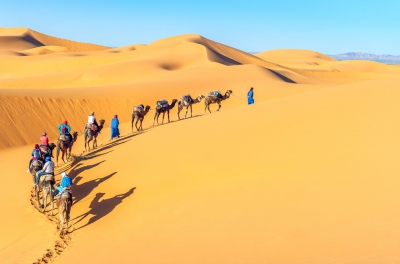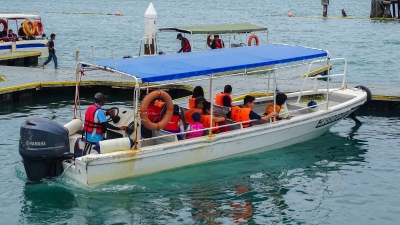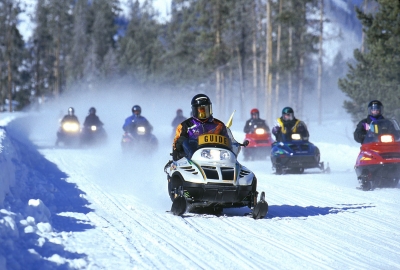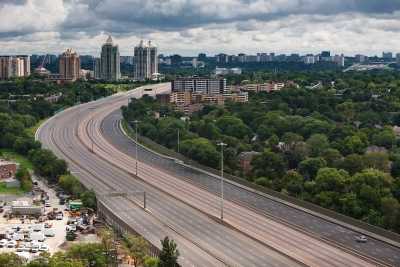
All is quiet except for the tinkling of harness bells and the shifting of sand, as the great animals lift their feet. Everywhere you look there is sand – as far as the eye can see. There is no road to follow, not even a track, but a string of camels winds its way across the vast desert.
A string of camels carrying goods is called a caravan. Camel caravans are still a common sight in many of the world’s deserts. But, small aeroplanes and sturdy all-surface vehicles are now used in some desert places.
A camel caravan may make its way to Timbuktu in Mali, western Africa. Timbuktu is near the southern edge of the Sahara. Every year from December to May, great camel caravans gather there. People come from many places to trade goods.
The camel is the ideal animal to use for transport in a desert, because its wide feet do not sink into the sand. Also, camels can go for several days without water and use fat in their humps to keep them alive. If you think the desert seems like an ocean of sand, you can see why camels are often called “ships of the desert”.
Picture Credit : Google





